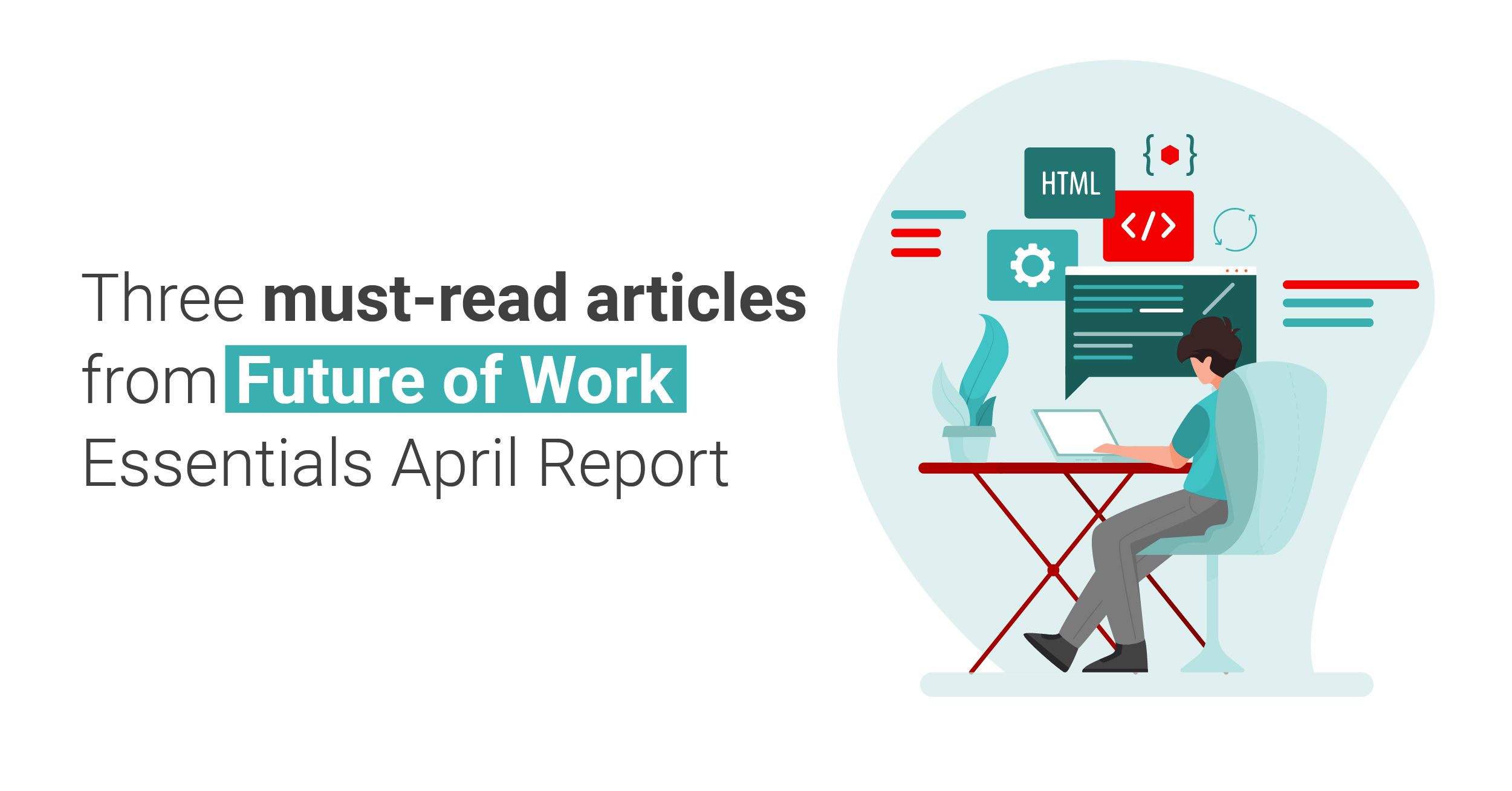
The Definitive ‘What to Read’ from our April Future of Work Monthly Report
At Essentials, we bring you the top articles and trends curated by the experts themselves. This month, we’re taking a look at three of our top picks from the April Future of Work Monthly Report, providing you with the latest industry updates in one streamlined format. From the latest language processor (GPT-3) to a bright outlook on the future of work, our report unpacks what you need to know, curated by leaders in-the-know.
Could Covid-19 end up improving the world of work?
The coronavirus pandemic brought the entire working world to its knees. It caused a decrease in employment figures 14 times larger than that of the 2008 financial crisis. It has put frontline workers at risk, both physically and psychologically. The world suffered (and continues to). All of us suffered. Even if we were lying on our couches surfing Netflix, we suffered because we feared losing our jobs, or because we did. Or because we were bored, disempowered, uncertain.
So how is it possible that the pandemic could end up making things better for the working man and woman (on the sofa), as well as low income and traditional blue collar earners?
The pandemic has helped fast track pressing employment issues
Because we have had to adapt quickly due to the spread of Covid-19, and come up with endless contingency plans for contingency plans, companies have had to urgently relook pressing issues including gender and race bias and inequities in the workplace. And fast. In addition, remote work has helped myriad office workers lead more flexible, balanced working lives. It’s encouraged managers to become better communicators, governments to pass laws to protect employees the world over and also helped stimulate massive entrepreneurship.
Show me the money: closing the wage gap
Despite huge job losses, global society has in fact seen the wage gap closing, albeit incrementally, between diverse income groups in the 21st Century. If governments and private enterprise can work together to continue to stimulate job creation, we may just be (more than) okay. We are becoming more adaptable, more enterprising, and kinder to our workforce and to ourselves.
The future of work: what next?
The big question is not even if or how we are going to bounce back, but rather how fast.
Read the full report on this complex subject and optimistic view on the future of work here.
A new managerial approach in the era of remote work
From a comprehensive new study by MIT SMR-Deloitte, it has emerged that most companies view their external contractors and service providers as part of the larger workforce they manage. This means it’s not only their permanent employees they need to consider when adapting management strategies. Especially in a post-or mid-pandemic playing field.
External contractors: part of the company collective?
Most mid- and senior level managers struggle with reconciling the rules of conduct that manage a permanent workforce, versus those that (generally) govern a more informal approach for external providers. The MIT SMR-Deloitte survey suggests this may need to change. Especially since the survey found that a whopping 87% of respondents consider everyone, from a gig worker to a software bot, to count as company employees.
The solution: A Workforce Ecosystem
The concept of viewing your workforce as one large ecosystem means applying similar practices when managing all employees, no matter their role. It’s all about adding value and allowing people within and outside of a company or organization to successfully pursue both individual and collective goals. It’s about creating more cohesion in management systems and even HR practices.
Making it work in the era of remote work
Creating a comprehensive workforce ecosystem makes good business sense. Especially in the era of remote work, when you cannot check over Jim from accounting’s shoulder anyway, because he’s at home wearing pajama pants and sipping from his tea!
Read the full report here to gain insight into its operational details.
Is AI set to replace human writers?
The birth of the GPT-3 language processor is testing our perceptions of what are traditionally considered skills only the human mind could master. How much of what we do as humans can be copied by artificial intelligence? Well, it seems a lot more than we think! The GPT-3 language processor appears capable of drafting articulate, interesting, fact-driven articles on a sophisticated topic like sound financial investment. While some of the phrasing is a little clunky, the bot does a pretty good job!
Would you take financial advice from a bot?
GPT-3, created by OpenAI, is currently used by over 300 applications globally and writes a staggering average of about 4.5 billion words per day. Not only can it construct coherent, grammatically correct sentences, it can also analyze online data and create logical and arguably helpful responses on a complex topic like financial investment. Pretty scary!
GPT-3’s view on cryptocurrencies
In a recent experiment it not only crafted an article but also answered a Q & A on everything from cryptocurrencies (yes, go for it, says the bot) to investing in gold (a hard no). The machine learned responses aren’t bad at all. They even include some sly humor and offer pretty sound, basic advice.
The fascinating results of this auto-generated AI investment Q&A can be read here.